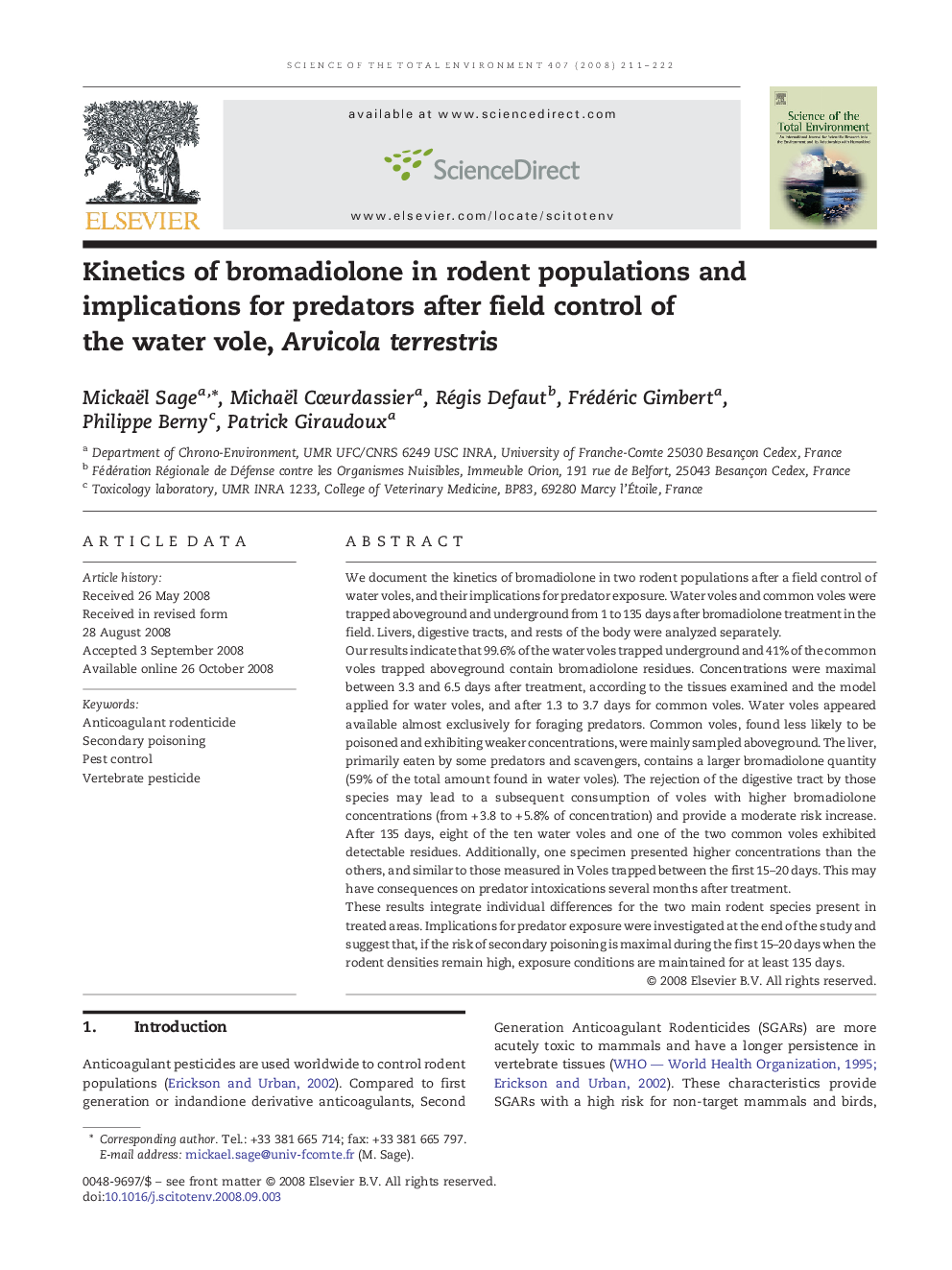| کد مقاله | کد نشریه | سال انتشار | مقاله انگلیسی | نسخه تمام متن |
|---|---|---|---|---|
| 4432478 | 1619909 | 2008 | 12 صفحه PDF | دانلود رایگان |

We document the kinetics of bromadiolone in two rodent populations after a field control of water voles, and their implications for predator exposure. Water voles and common voles were trapped aboveground and underground from 1 to 135 days after bromadiolone treatment in the field. Livers, digestive tracts, and rests of the body were analyzed separately.Our results indicate that 99.6% of the water voles trapped underground and 41% of the common voles trapped aboveground contain bromadiolone residues. Concentrations were maximal between 3.3 and 6.5 days after treatment, according to the tissues examined and the model applied for water voles, and after 1.3 to 3.7 days for common voles. Water voles appeared available almost exclusively for foraging predators. Common voles, found less likely to be poisoned and exhibiting weaker concentrations, were mainly sampled aboveground. The liver, primarily eaten by some predators and scavengers, contains a larger bromadiolone quantity (59% of the total amount found in water voles). The rejection of the digestive tract by those species may lead to a subsequent consumption of voles with higher bromadiolone concentrations (from + 3.8 to + 5.8% of concentration) and provide a moderate risk increase. After 135 days, eight of the ten water voles and one of the two common voles exhibited detectable residues. Additionally, one specimen presented higher concentrations than the others, and similar to those measured in Voles trapped between the first 15–20 days. This may have consequences on predator intoxications several months after treatment.These results integrate individual differences for the two main rodent species present in treated areas. Implications for predator exposure were investigated at the end of the study and suggest that, if the risk of secondary poisoning is maximal during the first 15–20 days when the rodent densities remain high, exposure conditions are maintained for at least 135 days.
Journal: Science of The Total Environment - Volume 407, Issue 1, 15 December 2008, Pages 211–222